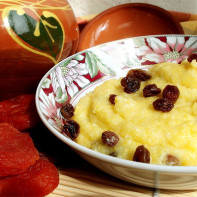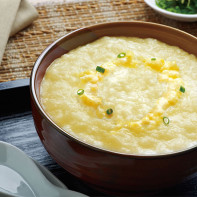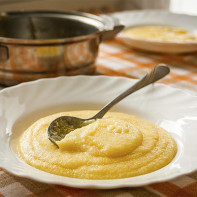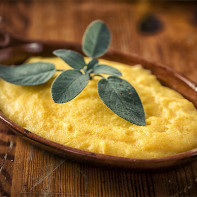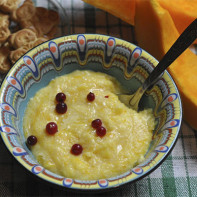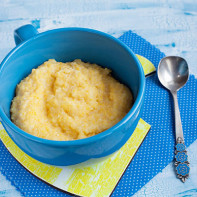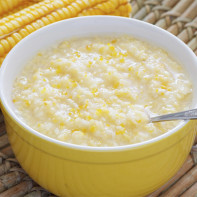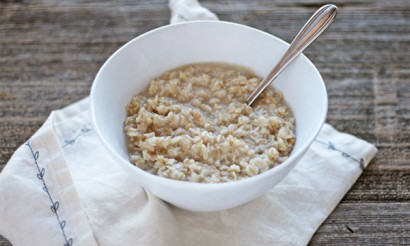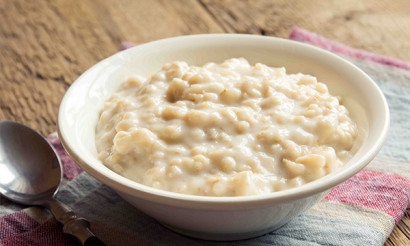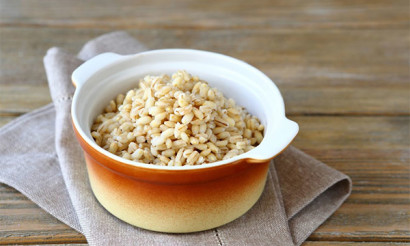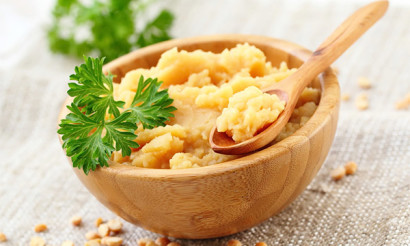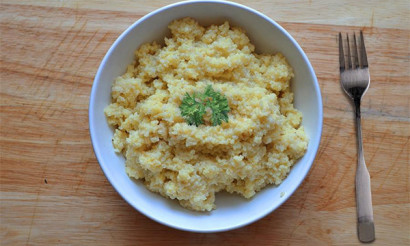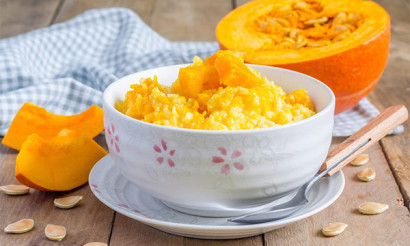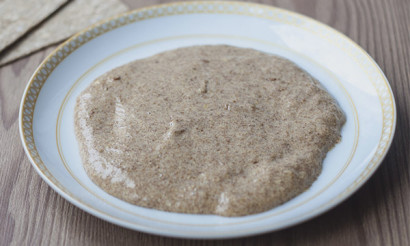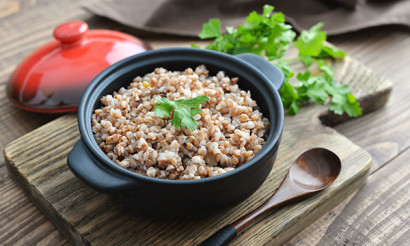Corn porridge: health benefits and harms
Corn porridge is a tasty and healthy dish. It is prepared from cereals obtained by grinding corn grain. Thanks to this, the finished dish contains almost the same vitamins and minerals as the grain itself. These are nicotinic acid, vitamins A and E, zinc and phosphorus, amino acids, fiber and much more. For those who monitor their nutrition, it is important that corn grits are classified as whole grains, since its particles contain the remains of the shells of grain and its germ. Therefore, it brings maximum benefit.
- Composition and calorie content
- What is useful corn porridge
- General benefit
- For women
- For men
- During pregnancy
- When breastfeeding
- The benefits of corn porridge for a child
- At what age can I give
- How to cook corn porridge for a child
- Is corn porridge good for weight loss?
- Corn porridge in medicine
- With diabetes
- With pancreatitis
- With gastritis
- For the intestines
- For constipation
- With gout
- With colitis
- With hemorrhoids
- With cholecystitis
- Harm and contraindications
- Could there be an allergy to corn porridge
- How to cook corn porridge: recipes
- On the water
- In milk
- In a slow cooker
- Can dogs give corn porridge
- Interesting facts about corn
Composition and calorie content
Corn grain itself contains only 97 kcal per 100 g. In corn porridge, depending on the method of preparation (including the addition of milk and butter), there are much more calories - in the range of 337-350 kcal per 100 g. However, due to this that the product is not completely absorbed, the real calorie content of porridge cooked on water is much lower - up to 100 kcal per 100 g.

Corn grits, depending on the characteristics of raw materials, can contain up to 70% carbohydrates and up to 20% protein, and the rest is fats, vitamins and minerals. It is worth considering the composition of corn grits in more detail:
- Plant and dietary fiber.
- Amino acids.
- B vitamins, including pyridoxine, pantothenic acid, thiamine. They perform an important function - they support the functioning of the central nervous system, provide digestion processes, and the conversion of nutrients into energy. These vitamins are necessary to normalize the metabolic process, including at the cellular level. In addition, these substances are rightly called beauty vitamins.
- Vitamin E (tocopherol). This substance is one of the most powerful antioxidants. It not only slows down the aging process, but also has an anti-inflammatory effect, improves cognitive function, and has a beneficial effect on the state of blood vessels. Also, the vitamin is useful for the reproductive system - both male and female.
- Phosphorus. This substance stimulates metabolic processes, improves brain function, and is responsible for normal muscle tone and bone strength. This is why corn porridge is often recommended for older people.
- Magnesium. The element is necessary for the normal functioning of the central nervous system, and it also helps to improve cardiovascular activity. Under the conditions of chronic stress in which a modern person lives, magnesium cannot be dispensed with, because it helps to smooth out its negative effects.
- Iron. The value of this element is difficult to overestimate. It directly affects the level of hemoglobin in the blood, and that, in turn, affects the state of the circulatory system, establishes its transport function.
- Copper. Along with iron, this trace element provides the synthesis of hemoglobin. In addition, it has an antiseptic effect, and is also responsible for the elasticity and youth of the skin, since the production of collagen largely depends on it.
- Zinc has an anti-inflammatory effect. It is also important for healthy skin, hair and nails. This element is also involved in the reproductive system.
Interestingly, vitamins are concentrated mainly in the germ of the grain. When processing cereals, they are preserved - unlike other products obtained from corn.
It should also be noted that corn grits are low in lysine - an essential amino acid that is important for health. But there are many other useful amino acids in it - tryptophan. Therefore, it is often advised to mix corn grits with legumes, as they, on the contrary, have little tryptophan and a lot of lysine.
What is useful corn porridge
General benefit
This dish is useful in that it energizes for the whole day, without being put off in the form of fats. It normalizes the functioning of the intestine, with infrequent use, eliminates constipation, helps to eliminate toxins, lowers cholesterol, has a beneficial effect on the state of the liver, strengthens natural immunity and preserves the health of the cardiovascular system.
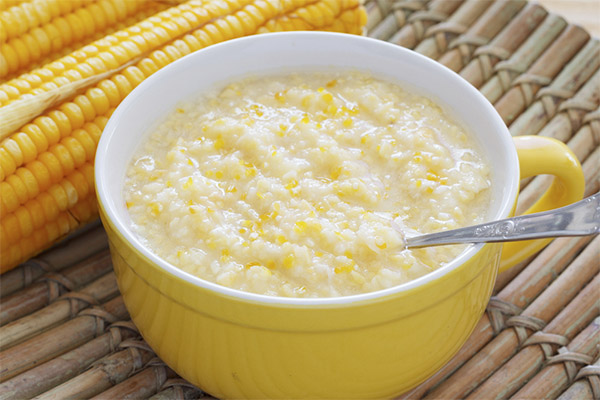
Of course, everything is good in moderation. For adult men and women, the norm is calculated in terms of dry product of 50–70 g of cereal (moreover, it is advisable to eat porridge for breakfast or lunch, that is, in the morning). Only then will it be beneficial. At the same time, it is believed that porridge cooked in non-skim milk does more good than cooked on water, because in this case the dish will contain more nutrients and vitamins, which are also better absorbed.
For women
For the fair sex, corn porridge is good because it contains vitamin E, useful for the reproductive system. Also, this dish should be consumed by those who are trying to lose weight or just follow the figure.
Finally, cereal porridge is a dish that is important not only for health, but also for beauty. It contains zinc, which strengthens hair and nails, as well as antioxidants that make the skin supple.
For men
For the stronger sex, this dish is useful in its high zinc content, which has anti-inflammatory properties and has a beneficial effect on the reproductive system. Eating corn porridge is also worthwhile for the prevention of prostatitis.
In addition, as is known, representatives of the stronger sex, due to physiological characteristics, often suffer from cardiovascular diseases. Corn grits contains phosphatides - substances that belong to the category of complex lipids. They participate in cholesterol metabolism, that is, they help to clear the walls of blood vessels of accumulated bad cholesterol, which prevents the formation of blood clots. Of course, more phosphatides are found in corn oil, but they are also found in cereals, which makes it possible to consider dishes from it as a prophylactic for diseases of the cardiovascular system.
During pregnancy
For the future mother, folic acid is the most important element. It is necessary for the proper development of the fetus, the formation of the nervous system of the child. Its lack can lead to various pathologies, as well as to the fact that the baby is born with reduced weight. Yes, and in the very future mother, a lack of folic acid leads to increased toxicosis and various health troubles. Therefore, in the diet during pregnancy, it is worth including corn porridge, which contains in large quantities this acid and B vitamins, as well as phosphorus, zinc and a number of other necessary substances. Moreover, such porridge is a low-calorie product.
However, it should be noted that corn porridge should not be eaten by people with increased blood coagulation. During pregnancy, coagulability often increases, so you need to first take tests and consult a doctor.
It should be remembered that there are certain standards for the use of this product. During pregnancy, this is 60 g of dry cereal per day, that is, a little more than 1/4 cup.
When breastfeeding
During lactation, corn porridge is useful due to its high content of vitamins and minerals. At the same time, it does not cause flatulence and increased gas formation, since it does not contain gluten, so the baby will also feel quite comfortable. And a young mother, using low-calorie porridge, will be able to lose weight, which gained during pregnancy.
The benefits of corn porridge for a child
For a long time, pediatricians did not have a single opinion on corn porridge. However, after it turned out that this cereal did not contain gluten, many doctors began to recommend it as one of the first cereal foods.
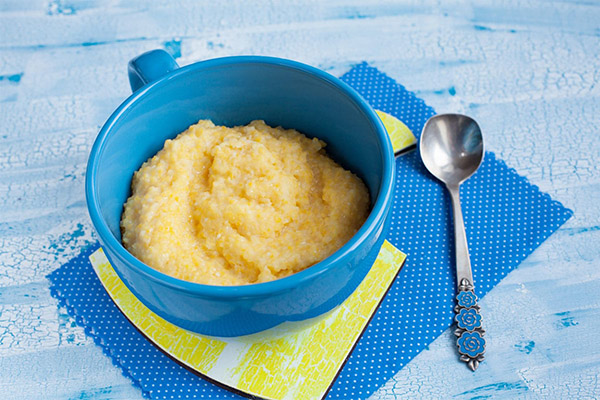
Corn porridge is good in that it normalizes digestion, eliminates bloating and flatulence, and prevents constipation, which often occurs in babies (and especially those who are breast-fed). At the same time, porridge contains all the vitamins and minerals that a child needs for normal development. It has a pleasant taste, in addition, as the baby grows, it can be mixed with vegetables and fruits introduced into complementary foods. It is also recommended to add literally 0.5 tsp to the dish. butter.
At what age can I give
Babies who are breast-fed are given corn porridge as early as 4-5 months. Those who are on the HB, such lure is administered later - at 6-8 months. But you always need to consult a pediatrician first.
You should also adhere to medical standards. Children under the age of 3 can be given porridge in an amount of 15–20 g in terms of dry product.
How to cook corn porridge for a child
Breasts boil porridge not from cereals, but from flour, since it is better absorbed by the baby’s digestive system. 2 tablespoons are taken in a glass of water. flour, a teaspoon of sugar, salt on the tip of a knife. Water is poured into a pan, brought to a boil, pour flour, sugar, salt and cook, stirring with a whisk, for 3-4 minutes. At the end of cooking add oil. Babies who are breast-fed can cook a similar porridge based on their familiar mixture.
Children over the age of one year cook corn porridge with vegetables or fruits, most often in plain milk. Recipes:
- Corn porridge with dried fruits. On a glass of milk or the same amount of cold water take 2-3 tbsp. finely ground corn grits and a small piece of butter. In summer, you can add fresh fruits, in winter - bananas, raisins, dried apricots. Dried fruits are pre-washed and soaked in hot water, and then chopped. Pour groats into a saucepan and pour boiling milk or water, put on low heat for 15–20 minutes, periodically mix. Then add pieces of fruit, remove from heat, wrap a saucepan with a towel and insist a little more.
- Corn porridge with vegetables. The proportions are the same as indicated above. But as an additional ingredient, it is recommended to add carrots or pumpkin. They are cut into small cubes, spread on a heated frying pan without oil and sprinkled with sugar. Turn off the fire after the vegetables have started juice. This dressing is added to the cereal at the very beginning of the preparation of porridge.
It is recommended to serve the dish with butter so that it is better absorbed.
Is corn porridge good for weight loss?
At first glance, it may seem that corn porridge is a high-calorie product, so it is not suitable for dietary nutrition. In fact, this is not so, corn porridge is one of the best dishes for effective weight loss, which gives a stable effect. The substances contained in this cereal prevent fermentation in the intestine and normalize lipid metabolism. In addition, since proteins are not fully absorbed, the actual calorie content will be lower than 330-350 kcal per 100 g. If you cook corn porridge in water and without the addition of butter or raisins, then the calorie content will be only 70-80 kcal per quantity of product.
As already noted, it is best to eat corn porridge in the morning. But in general, it can be eaten at lunch - at this time it will also be well digested. The plant fibers contained in it are ballast substances. Due to their presence, the digestion process lasts long enough. This provides a feeling of satiety for a long period. In addition, the composition of corn porridge allows you to get rid of bad cholesterol and fatty deposits.
Mono-diet based on corn porridge is popular. Before you try it, you need to consult a nutritionist. Mono diet on corn porridge, cooked on water and without sugar, is designed for 4 days. During this time, you can lose 3-5 kg, and without harm to health and without feeling hunger. It is clear that if the diet is combined with physical activity, then its effectiveness will be higher.
Corn porridge in medicine
Although corn porridge is generally good for health, it can be contraindicated in certain diseases. In each case, you must consult your doctor before including this dish in your diet.
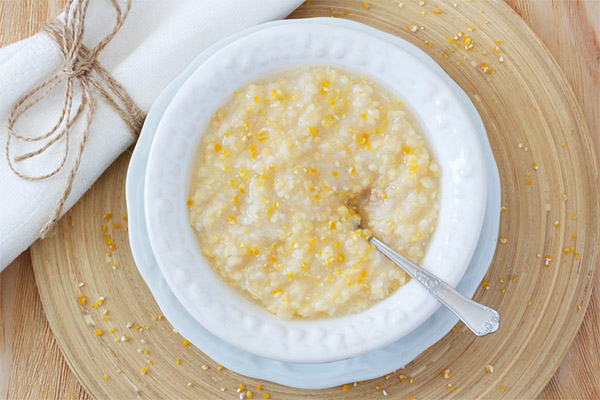
With diabetes
For diabetics, the glycemic index (hereinafter GI) plays an important role. Foods with a GI below 40 are considered to be absolutely safe in this respect, they use dishes with a GI in the range of 40–70 units with caution. In this case, the grain of corn obtained from vegetable (sugar) varieties, GI is quite high - often even above 70 (it depends on the variety). But the fact is that the grain contains significantly less carbohydrates than corn grits, as other varieties are cultivated. And in the end, corn porridge has a GI of 35–40, depending on the specific type of cereal and the methods of its preparation.
If you use small amounts of corn porridge with type 2 diabetes mellitus, lowering its glycemic index with a protein component (for example, boiled chicken breast or low-fat cottage cheese), then this dish will only benefit. There are studies proving that the substances that make up this cereal can lower blood sugar. But what can not be done in any case is to replace cereal from whole grain cereals with cereals, since their GI is much higher.
The following rules should be observed:
- cook porridge only in water;
- reduce the amount of vegetable oil to a minimum so that the GI does not increase;
- use only low-fat cottage cheese as an additive;
- eat porridge with carrots, celery and herbs, so it will bring more benefits.
In no case should you exceed the amount of corn porridge recommended by medical standards - no more than 120-180 g. This is a fairly satisfying dish, especially in combination with vegetables. You can include it in the diet several times a week.
With pancreatitis
Despite all the useful properties, with pancreatitis, corn porridge can not be eaten. This applies to both acute and chronic forms of the disease. With exacerbation of all cereals, only oatmeal can be, and in the remission stage, products are needed that will not stimulate the pancreas. Otherwise, the condition only worsens.
With gastritis
In acute gastritis, corn porridge is contraindicated. In the chronic form in remission, it is necessary to consult with the attending physician regarding its introduction into the diet and possible restrictions.
But even if the specialist allows you to include corn porridge in the diet, you will need to be careful. In particular, you should not eat it at night, because in this case you can encounter troubles like heartburn, a feeling of heaviness in the stomach and stomach. This can provoke a new aggravation or prevent a good rest at night.
For the intestines
If there are no serious pathologies like peptic ulcer, then corn porridge can be eaten. It is considered an excellent cleanser that removes toxins from the body. Even if the croup is cooked for a long time, quite rigid particles remain in it, which help to remove everything unnecessary.
To maximize the benefits of corn cereal porridge, you need to choose the right product. In stores, there are cereals of several degrees of grinding - fine, medium and large. Contrary to popular belief, a coarsely ground product is considered more beneficial for the intestine because it contains more dietary fiber.
For intestinal health, it is recommended to include corn porridge in the menu 2-3 times a week. At the same time, you can cook it with various additives from vegetables and soft cheese, but not with such traditional ingredients as fried onions and very salty feta cheese, since they can damage the intestines.
For constipation
Corn grits contains a lot of fiber. This allows you to normalize digestion, especially since in this product, dietary fiber is combined with starch, which guarantees a milder cleaning. In addition, due to its unique composition, such porridge stops fermentation processes and normalizes metabolism. All this makes her an excellent prophylactic against constipation. It can also be used when they are irregular in nature. But if constipation becomes chronic, then more radical measures must be taken.
In order for croup to produce the desired effect with constipation, certain rules are observed:
- Medium or coarse grits are taken and carefully boiled so that there is no gas formation.
- Porridge is prepared exclusively on water, whole milk contributes to constipation.
- Vegetable oil is added to the finished porridge, not butter, best of all - olive or linseed.
They eat such porridge for breakfast and do not drink anything. Only in an hour you can drink a glass of herbal tea or juice.
With gout
This disease is largely due not only to the accumulation of uric acid, but also to an increase in the concentration of glutamine. At the same time, corn grits contain a lot of glutamic acid. It is even useful for healthy people, because it improves memory and cognitive functions. But with gout, corn grits will have to be excluded from the diet precisely because of the presence of this component.
With colitis
This pathology is an inflammatory bowel disease. Since it is recommended that foods that will not irritate the intestines and enhance its motility, it is better to refuse corn porridge.
With hemorrhoids
With this disease, it is very important to avoid constipation. Therefore, nutrition should be varied and balanced in terms of the combination of fats, proteins, carbohydrates, minerals and vitamins. Corn porridge is just part of such a balanced diet. It contains a lot of magnesium and potassium, which increase intestinal motility and remove the very cause of hemorrhoids. It is also useful in that it contains a lot of iron, which prevents anemia, and this is very important, since hemorrhoids are often accompanied by this pathology.
In order to get the maximum benefit from corn porridge, in this case you should take coarse grits and serve a dish with vegetables rich in fiber.
With cholecystitis
In the acute stage of cholecystitis, almost all cereals, except oat, are prohibited. At the stage of remission, the menu expands, however, it is not recommended to eat corn porridge, because with violations of this kind this product is less absorbed by the body.
Harm and contraindications
Despite all of the above beneficial properties, corn porridge in some cases can be harmful. It is contraindicated:
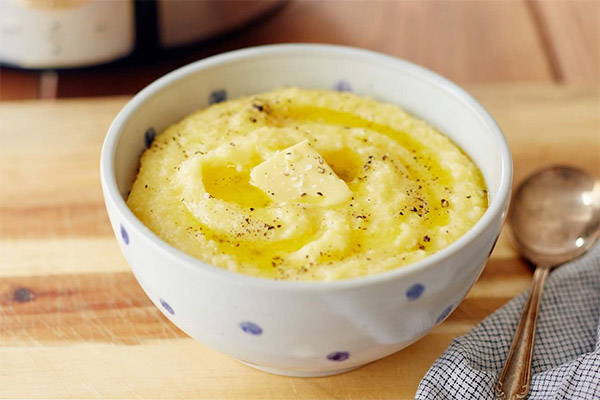
- In acute forms of gastrointestinal tract pathology, including gastritis, colitis, gastric ulcer, pancreatitis.
- Increased blood coagulation, as well as the presence of various vascular problems, fraught with thrombosis.
- Chronic constipation.
- Dystrophy and anorexia (since this is an extremely low-calorie cereal compared to even buckwheat).
If there is not even a diagnosed disease of the digestive tract, but there is an increased acidity of the gastric juice, then use this product with caution.
Could there be an allergy to corn porridge
Corn grits does not contain gluten (a protein that is found in almost all cereals), so porridge prepared from it can be included in the diet of people suffering from celiac disease, that is, gluten intolerance. Gluten is sometimes called an allergen. But in this situation, it would be more correct to talk specifically about intolerance, accompanied by digestive disorders.
In some cases, corn grits can cause food allergies, so doctors believe that children under the age of 6 months should not give it.
How to cook corn porridge: recipes
There are various ways of making porridge - in water or milk, with dried fruits, cheese, vegetables. Below will be considered the basic options.
On the water
For 150-200 g of cereals of any grinding, you need 2–2.5 glasses of water (the amount can be changed, most importantly, to keep the proportion - 1: 2.5), 30 g of butter, salt to taste. Croup is sieved through a sieve and thoroughly washed under a tap. At the same time, a thick-walled pan with water is put on fire, brought to a boil, the cereal is poured, and the resulting mass is periodically mixed until it boils again. Then reduce the heat to a minimum, add salt, cover tightly with a lid. Cook the porridge will still need at least 25-30 minutes. Stir constantly, as porridge burns quickly. Butter is added to the finished porridge.
If various additives are planned - tomatoes, cheese, bell peppers - they are put immediately after the porridge is removed from the heat, and with them they insist another 5-10 minutes.
In milk
To cook milk porridge, for 1 cup of pre-washed cereals you need to take 0.6 l of water, 2 cups of milk, 30 g of butter, sugar to taste and a little salt.
Pour water into a thick-walled pan, add salt, bring to a boil, then pour out previously washed cereal. Cook porridge for about 15 minutes over low heat, stirring constantly. While the water is evaporated, milk is brought to a boil separately and immediately poured into porridge. After that sugar, salt and pieces of butter are added to it.
In a slow cooker
The proportions for cooking in a slow cooker are somewhat different - here they take 2.5 glasses of water per 200 g of cereal, which is also pre-washed. Pour cereals into the multicooker bowl, add butter and salt, fill in with water, close the lid. Cook with the mode intended for cooking buckwheat. The timer will signal the readiness of the dish. Fans of thicker porridge can keep it in the heating mode for another 15–20 minutes.
Can dogs give corn porridge
This porridge is not given to dogs at once for several reasons.
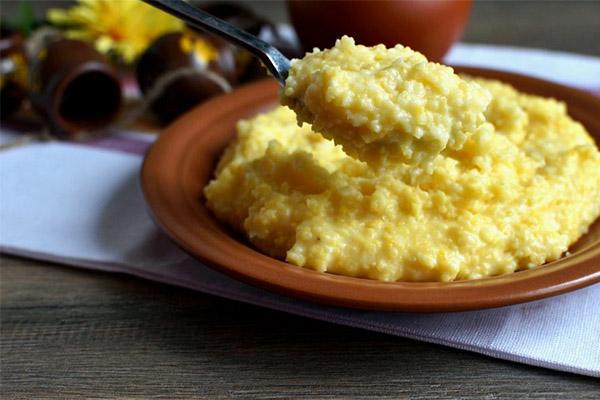
- Firstly, this is a low-calorie product - the pet will quickly get enough, but it is unlikely that the effect will last long.
- Secondly, it does not contain all the substances that dogs need, in the case of animals it is a “dummy”.
- Thirdly, corn porridge is poorly digested by dogs (by the way, the grains of this cereal are often not digested at all), it is slowly moving along the gastrointestinal tract. If your pet already has digestive problems, this will aggravate the situation. In especially severe cases, this can even cause such a dangerous pathology as intestinal inversion.
Interesting facts about corn
Corn is one of the most interesting cereals and, by the way, the only one whose homeland is America. There they began to grow it more than 5000 years ago! However, archaeological excavations show that in those days it was a plant with very small ears, up to 5-7 cm in length. Moreover, its origin has not been elucidated, since no wild corn has been found in nature. Moreover, modern varieties, in principle, can not run wild, because their grains do not crumble to the ground to give seedlings.
Many cereals are prepared from corn grits. The coarse grinding product consists mainly of various cereals, including mamalygu, which is so dense that it can be cut like bread. It does not have a pronounced taste and can be served with salted cheese, tomatoes, herbs.
And cereals and sticks are made from corn grits. Although they are not harmful, they are also not useful, since in the process of preparation the seeds containing vitamins and minerals are removed.
«Important: all information on the site is provided exclusively in fact-finding purposes. Before applying any recommendations, consult with a profile specialist. Neither the editors nor the authors are liable for any possible harm caused materials. "

